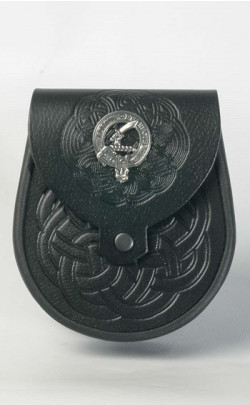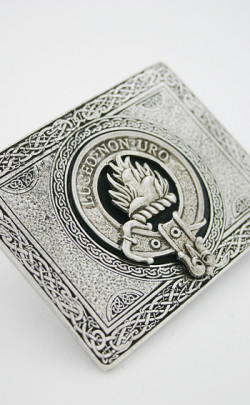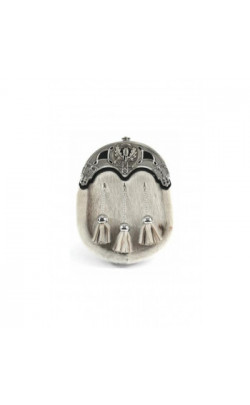
Scottish History
of Clan Dundas
The dynamic dynasty
The Dundas Clan can lay claim to producing a long line of distinguished Scots. Perhaps it’s not surprising, given their regal connections. The original Dundas family is said to originate from an area near the south bank of the Firth of Forth, in the region of modern-day Linlithgow. Back in the twelfth century that part of Scotland was known as Dundas. The name referred to a local hill — “The Hill of the Fallow Deer”. In those days surnames were not in common use, but when they came into fashion, the family, who owned the land, adopted the name Dundas.
Historians believe that the family descended from Helias, son of Hutred, who was a younger son of Gospatrick or Cospatrick, the first Prince of Northumberland. Gospatrick was a cousin of King Malcolm III of Scotland, whose father King Duncan I was murdered by Macbeth. Gospatrick’s daughter, Ethelreda, married Malcolm’s oldest son, who went on to become King Duncan II of Scotland. So the Dundas clan has a strong link in more ways than one with with Scotland’s royal family at the time.
The first of the Dundas clan to be regularly mentioned in accounts is Serle de Dundas, who lived during the reign of William I, known as William the Lion, the king of Scots who reigned from 1165 to 1214. William is credited with founding Arbroath Abbey, the site of the later Declaration of Arbroath. However, he is best known for adopting the use of the Lion Rampant on his flag. It was a red lion on a yellow background which is still in use today.
A later Serle de Dundas was, in the 13th century, a signatory to The Ragman Roll. This was a record of the acts of fealty and homage which King Edward I of England forced Scotland’s nobility and gentry to sign in 1296. Edward was known as The Hammer of the Scots because of his attempts to impose his rule on the land north of the border. Initially, Edward had planned to annex Scotland through marriage. His intention was for his son and heir Edward to marry Margaret the Maid of Norway. She was the daughter of King Eirik II of Norway and Margaret, daughter of King Alexander III of Scotland. The princess was born in 1283 and was sometimes known as Margaret of Scotland and was considered to have been Queen of Scots from 1286 until she died in 1290 with no successor. There were fears that without a clear-cut heir to the Scottish throne a power vacuum would develop and the country would descend into tribal war. In order to prevent this Edward was invited by the nobility and other power brokers of the time to rule on who would be the next king. In return he insisted on the signatures to the Ragman Roll. Another family member, Robertus de Dundas, also signed the Roll but little is known about him.
The Dundas clan’s loyalty to the English monarch was short-lived, however. Edward treated Scotland like his own personal playground and constantly tried to undermine the Scots king he had chosen, John Balliol. Eventually, Balliol responded by signing a treaty with France, known to this day as “The Auld Alliance”, and made plans to invade England. However, the Scots were no match for their southern enemies and within three months of hostilities starting in March 1296 Edward had conquered most of Scotland. But a year later the Scots, under William Wallace began a revolt and Sir Hugh Dundas joined his forces. Later when Robert the Bruce carried the fight to the English the Clan Dundas was by his side. In 1332, after the death of The Bruce the Scots were heavily defeated by the English at the Battle of Dupplin Moor. The clan chief, Sir George Dundas died in what was one of the worst defeats in Scottish history.
In the 15th century Sir James Dundas married Elizabeth Livingstone, daughter of Sir Alexander Livingstone of Callander. When James I was murdered, his successor James II was too young to ascend to the throne. He was put in the care of Sir Alexander Livingstone. During that period Livingstone was involved in a violent feud with the Douglas clan. In 1445 the Douglases became extremely powerful and this led to Livingstone being imprisoned as a rebel and the forfeiture of his lands. Due to their close connection, the Dundases also lost their lands. But during the reigns of James II and James III they were back in royal favour. Their property was returned to Sir James’s brother, Sir Archibald Dundas who made peace with the Earl of Douglas, and at that point they controlled most of what is today West Lothian, plus a chunk of Edinburgh. Following the restoration the lairds of Dundas wore the Douglas crest.
By the 17th century the name Dundas was well established among the leading lights of Scottish politics and, crucially, the country’s legal profession. Indeed, The Arniston branch of the Dundas line held the highest posts in the nation’s law courts for five successive generations. Amazingly, four of them were named Robert.
The first of the Arniston Dundases was Sir James Dundas (1570-1628) who was Governor of Berwick. He was knighted by James VI and was a Member of Parliament representing Midlothian from 1612-25. His eldest son, Sir James Dundas, was a judge in the Court of Session which provided him with the title Lord Arniston. He was also a member of the Scottish parliament, representing Midlothian. Although he was a loyal subject he strongly disapproved of the king’s attempts to force an English Episcopalian-type prayer book on the Church of Scotland.
King Charles had inherited the throne in 1625. His father James VI of Scotland became James I of England in March 1603. At that time Scotland and England operated like two distinct countries ruled by the same monarch. They each had their own separate parliament, church, law courts and tax-raising powers. They could even go their own way on foreign policy. Outside the Highlands, where many retained their Catholic convictions, Scotland’s religion was Presbyterianism, a harsh strict form of Protestantism. King James believed that his rule had a higher authority than the church’s. Despite that he failed in his attempts to force the Scots to embrace his Episcopalian doctrine, which allowed the monarch to appoint bishops to the church.
King Charles, who was born in Fife, decided to finish his father’s job and bring the Scots into line. It took him 12 years but in 1637 he ordered that the Book of Common Prayer should be read in St Giles Cathedral, Edinburgh. The congregation was furious. Many believed it was closer to Catholicism than Protestantism.
Hostility to Charles continued to grow and seven months later, in February 1638, Scotland’s National Covenant was published. This document, prepared with the full support of the nobility and land-owning class, proclaimed Scotland’s opposition to the king’s new prayer book. It was put on public view in Edinburgh and immediately attracted 60,000 signatures. Copies were taken throughout the country and many more signed up. Those who did became known as Covenanters.
Sir James joined the Covenanters and resigned from the Court of Session. Although great pressure was put upon him to reconsider, even to the extent of keeping his job open for 18 months he refused. He died in 1679.
His eldest son, Robert Dundas of Arniston was also a Court of Session judge. Like his father he took the title Lord Arniston. His son also Robert Dundas became Solicitor General for Scotland between 1717-20 and Lord Advocate from 1720-25. He was appointed Dean of the Faculty of Advocates in 1721 and in 1728 he successfully defended a man who’d been accused of murdering the Earl of Strathmore. The case led to the reintroduction of the guilty or not guilty verdicts at a time when the choice was proven or not proven. In 1748 Lord Arniston became Lord President of the Court of Session. Like his father he became an MP for Midlothian. He became Solicitor General, Lord Advocate and Lord President of the Court of Session.
His son, Robert Dundas (1713-87) also became an MP and a judge as did his grandson, yet another Robert Dundas (1758-1819) who also became Solicitor General and Lord Advocate. In addition from 1801 until his death he served as Chief Baron of the Exchequer which among others was responsible for Customs and Excise. Both Roberts also became Lord Arniston.
It was a remarkable legal dynasty. Yet even that spectacular achievement was overshadowed by another Dundas. He was Henry Dundas, a son of the second Robert Dundas, who went on to become the most powerful man in Scotland.
Henry the Great
Henry Dundas was a high-flying politician and barrister who was regarded as the unofficial king of Scotland during the latter years of the 18th century. Today’s parliamentarians could only dream of possessing such majestic power and influence. And yet, at the height of his giddy career he suffered a fall so spectacular that he was unable to recover.
He was born in 1742 in Dalkeith into a wealthy and highly-respected family. He was the son of the first, and brother to the second, Robert Dundas of Arniston, each of whom held the office of Lord President of the Court of Session, which in layman’s terms means they presided over the most supreme civil court in the land. He was educated at Royal High School and Edinburgh University and it was clear from an early age that he was destined for greatness. After graduating he followed many distinguished family members into the legal profession. In 1763, aged only 21 he was admitted into the Faculty of Advocates and although very young impressed many with his clear thinking and skilfull arguments.
The General Assembly of the Church of Scotland was at that time the best place in Scotland for public speakers to hone their debating skills. Such was his eloquence as a lay member in these challenging surroundings, no-one commanded more respect than Henry Dundas.
He continued to impress in court and was highly regarded both by his ever-increasing list of clients and the judges. In 1765 he married Elizabeth Rennie, heiress of the Melville Estates just outside Edinburgh and that brought him fabulous wealth which enabled him to pursue his ambition as a politician. But prior to launching a bid for parliament he continued his rise through the legal profession. In 1766 he was appointed Solicitor General for Scotland. As deputy to the Lord Advocate, who is the highest legal officer for both criminal and civil matters in Scotland, he was heavily involved in advising the Crown on Scots Law. The Lord Advocate’s office is also responsible for the Crown Office and Procurator Fiscal Service which together make up Scotland’s Criminal Prosecution Service.
In 1774 he finally became an MP, for Edinburgh and a year later he was appointed Lord Advocate, a post he held until 1783. Until this point he’d been a big fish in the small Scottish pond, but Henry Dundas now found himself in a position to display his talents and exert influence both nationally and internationally. His political progress was rapid, due mainly to his brilliant and quick-thinking mind. In one notable performance he argued convincingly that both sides of a stormy House of Commons debate were right. He told a stunned House that one argument was right in principle, while the opposing argument was right politically. Such was his mastery of logic, no-one could find fault with his line of thinking, even though there were those who quietly mocked his less than graceful manner and strong provincial accent.
He had initially joined Lord North’s Tory party. North had been Prime Minister since 1770. Twelve years later he became the first Prime Minister in the world to be forced out of office after a vote of no confidence. He was kicked out as a consequence of the defeat of the British army at Yorktown. That crushing loss forced the British government to negotiate an end to the American war of independence. There followed a period of political turmoil as North was succeeded by two Prime Ministers in quick succession. Despite that, Henry Dundas had worked hard to ingratiate himself with all parties so that he appeared to be indispensable to whoever was in power and while others faltered his political star continued to shine brightly. In 1782 he was appointed Treasurer of the Navy. But he resigned shortly after.
Family History Mini Book
We hope you enjoyed reading this excerpt from this mini book on the Scottish history of the Dundas family.
You can buy the full book for only108 Clan Dundas
Tartan Products
The Crests
of Clan Dundas





























































